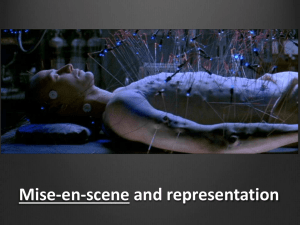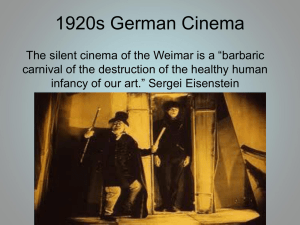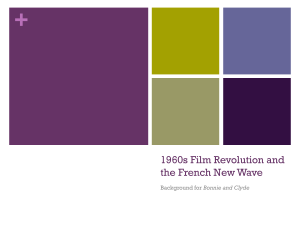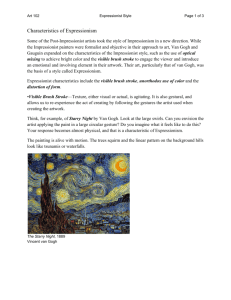German and/or Soviet Cinema
advertisement
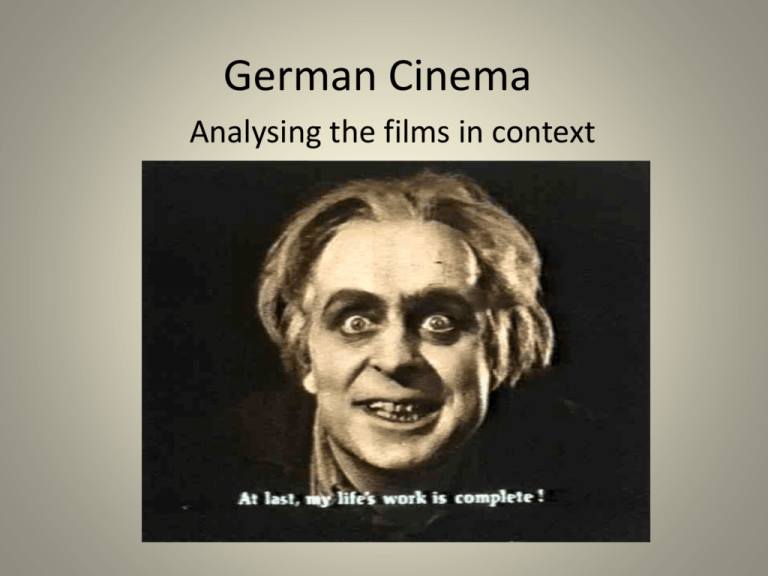
German Cinema Analysing the films in context German Cinema Context Issues • The trauma of the lost First World War • The new liberal Weimar republic unable to keep stability because of political tensions between right-wing (fascist) & left-wing (communist) activists • Huge economic problems in early 1920s • Fresh memories of wartime horror led to an interest in ‘mystical arts’ (the occult, astrology, etc) • Sense of escapism to a pre-industrial past • Anti-Semitism on the rise – though a debatable issue • The influence of expressionistic art • Commercial aspect of German cinema as a saleable product • Psychoanalysis War Trauma The study films are full of images of individual and national trauma, reflecting the recent war experience. Examples: Representation of authority Authority is: • • • • • Insane Corrupt Incompetent Blinkered Absent • Examples? Metropolis in Context Fritz Lang ~1927 Shots of the workers shows the men ‘trapped’ by their jobs, like the men who had joined the army in World War I. Note how mise-en-scene and performance support this sense of oppression Think about how often the theme of mind control dominates the films The workers are similar to the soldiers in the war as they follow orders from robot Maria without questioning her motives. This links to Anton Kaes’ reading of the films as ‘Shell-Shock Cinema’ This could also link to: Revolution and mob rule – in 1918 Rosa Luxemburg & Spartacist League advocated resistance to the new Weimar government. She lost control of rioting workers and was herself murdered by the paramilitaries. •The film is set in the future but has aspects of the past- e.g. they burn Robot Maria at the stake. •Harking back to a fictional, glorious past? The fear of machinery and machines taking over could be related to the fear of machines such as guns and bombs in world war one or a more generalised fear of mass industrialisation. The critic Thomas Elsaesser said that the upper classes in Germany turned to Nazism due to the fear of loss of social status. This can be suggested in the film as the workers attempt to overtake the upper class people. Siegfried Kracauer thought that this indicated a nation in search of stability, eventually turning to Hitler. The fear of unrest is certainly a key motif of these films, suggesting a fear of extreme politics taking over – as in Soviet Russia. The film has expressionistic stylisation Expressionism Expressionist art often used large shapes of bright, unrealistic colours with dark, cartoon like outlines. Figures might be elongated; faces wore grotesque, anguished expressions. Buildings might sag or lean, with the ground tilted up steeply in defiance of traditional perspective. • Film historians David Bordwell and Kristin Thompson describe the characteristics of German Expressionism. • “German Expressionist cinema is distinctive primarily for its use of mise-en-scene.” • “German Expressionist films emphasise the composition of individual shots to an exceptional degree.” • “Expressionist films had many tactics for blending the settings, costumes, figures and lighting. These include the use of stylised surfaces, symmetry, distortion, and exaggeration and the juxtaposition of similar shapes.” • “Perhaps the most obvious and pervasive trait of Expressionism is the use of distortion and exaggeration. In Expressionist films, houses are often pointed and twisted, chairs are tall, staircases are crooked and uneven.” • Actors in expressionist films make no attempt at realistic performance, using jerky or dancelike movements to express extreme emotions. • The acting style was designed to match the other elements of a stylised mise-en-scene. So actors move in patterns dictated by the sets. • It is therefore important that such performances not be judged not by the standards of realism, but by how they fit into the mise-enscene as a whole. Bordwell & Thompson state that: “Expressionist cinematography functions in a similar way to stress the links between the figure and the décor.” “Most Expressionist films employ a relatively simple lighting scheme, illuminating the scene from the front and sides to create a flat and uneven effect.” • However to a director such as F. W. Murnau, the use of shadows is a key expressionist technique. In Nosferatu, the elongated shadows of the prowling vampire create one of the most influential compositions in horror cinema. Cinematography Weimar film is notable for more than just use of mise-en-scene. Murnau, for example, explored the possibilities of the ‘unchained camera’. Narrative Structure The exploration of cinematic ‘truth’ and the use of flashback to present unreliable narration is found in Caligari. Murnau also nods to this in The Last Laugh How far is it important to locate your chosen films in a particular time and place in order to understand their meaning and significance? Finally… Nosferatu D2




